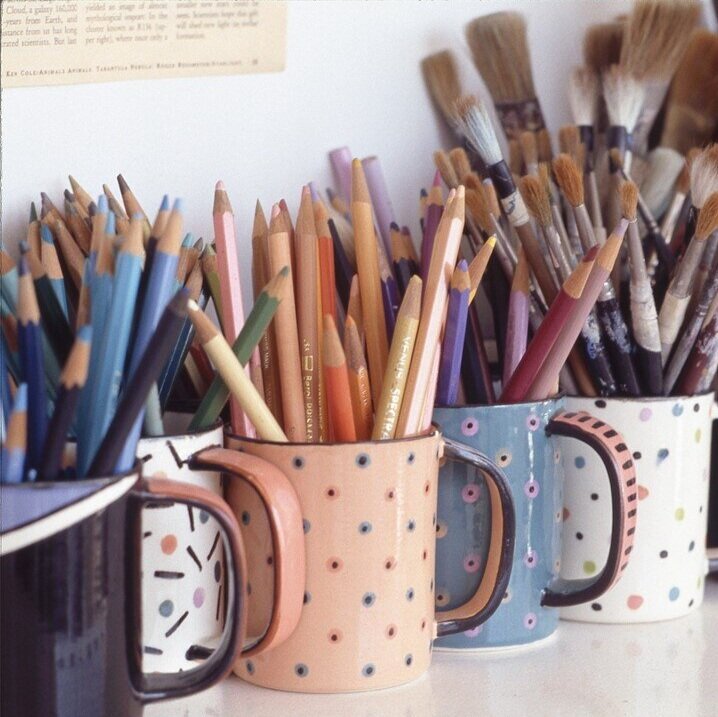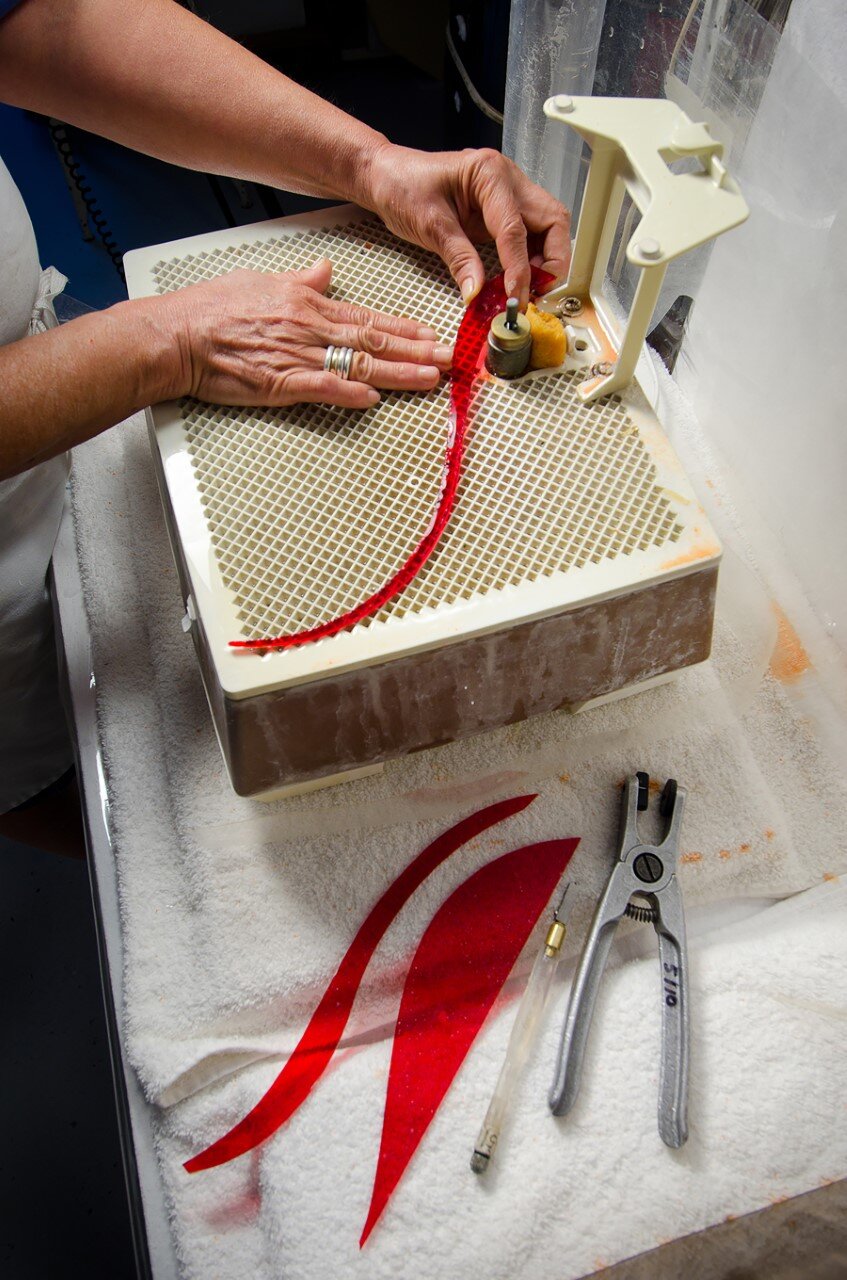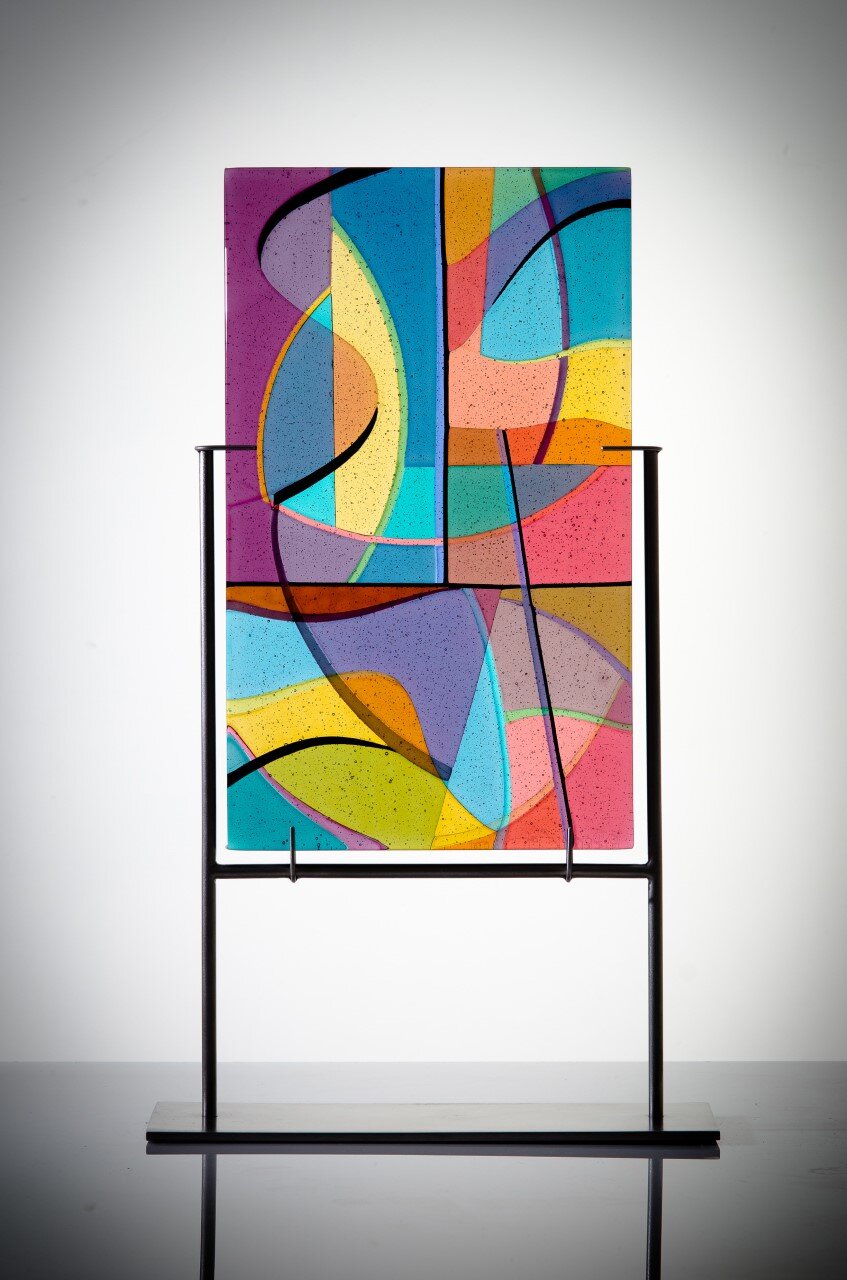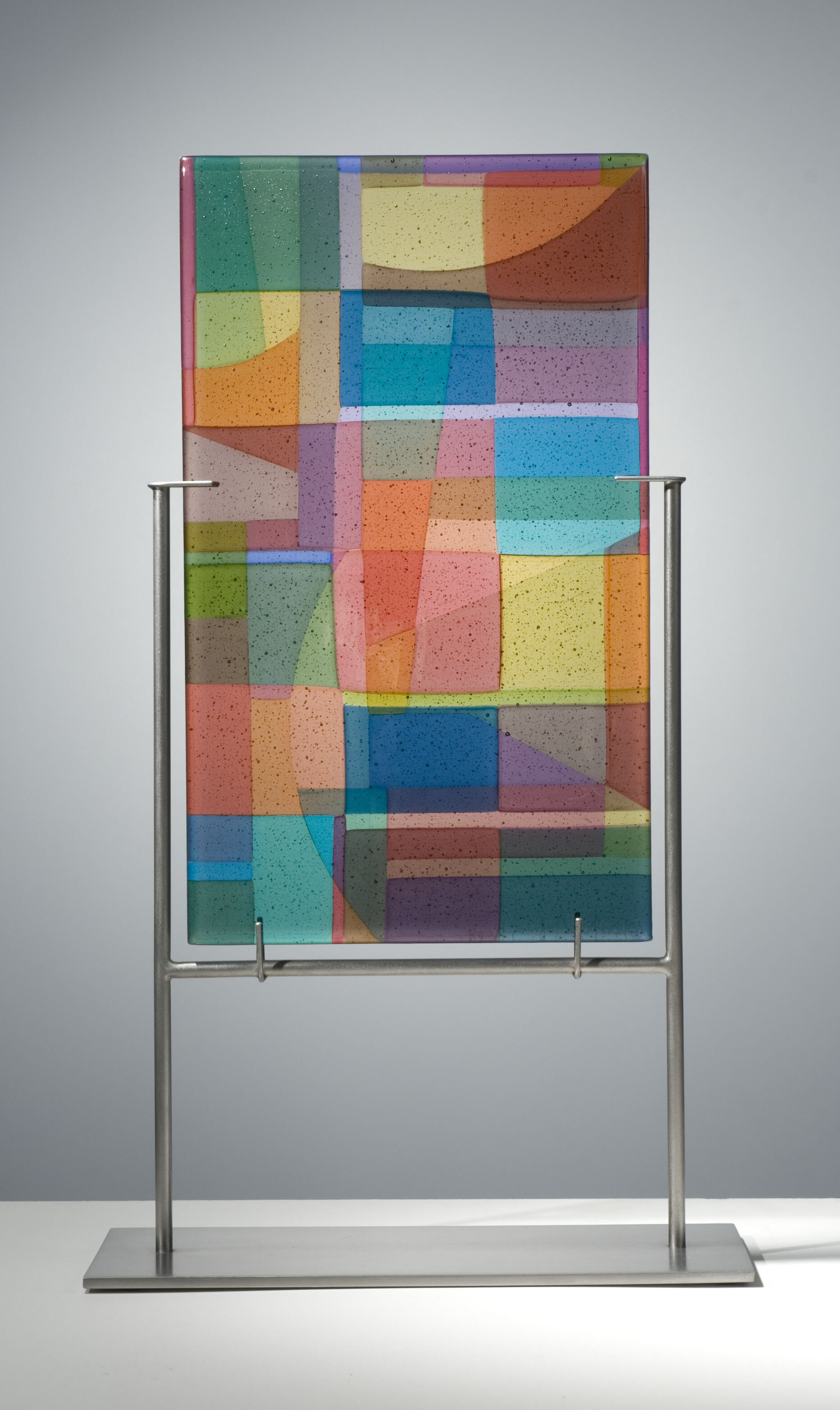Dorothy Hafner began the pandemic lockdown quite differently than most—she got on a plane. She was thrilled to be part of a group exhibition in Florida in early March 2020 and despite a feeling that things were not business-as-usual, she traveled to St. Petersburg for the opening events. Between the flight landing and the opening of the exhibition, the gallery made the difficult decision to shut down. By the time she returned to Connecticut, the world had changed.
Hafner is a self-described “news junkie” who reads The New York Times front to back, a habit which usually fulfills her but during the pandemic was depleting. One look at Hafner’s artwork and you know she comes from a place of joy. When she feels down, Hafner is more apt to watch a tear-jerker movie than work her emotions out in the studio. She has been a full-time, self-supporting artist for 40 years and in that time has always aimed to bring delight into people’s lives through her work. Nothing gives her greater pleasure than seeing someone smile when they look at one of her pieces.
Keenly aware that she cannot create happy work from an unhappy place, Hafner avoided her studio in the early days of the pandemic. Throughout her career she has allowed herself pauses when she feels the need for change or when she is in search of her next idea, so a short break felt normal. When she eventually forced herself back in the studio, she was using such dreary colors that her assistant (who came to work masked and gloved) remarked that the pieces looked like they were made by someone else. So instead of pressuring herself to create her next masterworks, she allowed herself to play by making happy objects for her friends and relatives. Using precut and fired glass pieces in her workshop, she made plates and platters (forms she had not done since the 1980s), using a light and intuitive approach that was all about bringing joy and optimism in a difficult time.
Hafner’s Studio in Connecticut
Photos by Paul Rogers
Hafner spent 40 years living and working in Manhattan, returning to her girlhood home in Connecticut during the scorching urban summers to help in her parents’ garden and swim in their pool. She loved the plurality of city, its people and food, and the years were extremely busy. Her avant-garde tableware for Tiffany and Rosenthal became icons of 1980s design. She traveled extensively, commuting to the Rosenthal factory in Germany and flying on their behalf for appearances throughout Europe, Asia, and Australia. All that time in the air gave her an appreciation for the vast topographies of the earth, images she recorded in her brain like photographs on a camera reel and which she recalls to this day when making her glass panels.
Hafner is a trained painter and sculptor who relished in the fantastic opportunities that accompanied being an industrial designer, but after a decade she needed a respite and a new direction. While scuba diving in the Great Barrier Reef, she was overwhelmed by its breathtaking colors and forms and the brilliant dynamism of its living ecosystem. When she tried to paint her memories, she found the paint lacked the nuance of the images in her head. She began the search for a medium equal to the challenge and signed up for a workshop at Urban Glass in Brooklyn, where for $60 she learned to blow a paperweight. What struck her most was how, at every table, each young artist was working in a unique way with glass. This creative experimentation, in which each piece was its own journey, felt very different from her experience in commercial production and conjured feelings from her early days as an artist that she was anxious to recapture.
Her foray into glass felt as serendipitous as her path to ceramics (Hafner began designing dinnerware after the ceramicists in her shared studio space kept getting her painting materials dirty with their clay and glazes). Once she decided to pursue glass, she immersed herself fully in the medium. As she got further along in her work, she learned of Maestro Lino Tagliapietra and was fortunate to be introduced to him by mutual friends, beginning a period of collaboration between the two. The idea of layering fused flat glass panels to blend color and create depth came accidentally when Hafner was stacking items for storage and temporarily put them on a light table, where they came alive before her eyes. It was an a-ha moment. The technique is ideally suited to Hafner, who loves the extensive planning and drawing process that precedes the making of a single panel (think 20-30 drawings for each possible idea). When she is in her design studio, it is a white void of blank walls providing a monastic environment for unadulterated creativity.
Hafner pre-designs her panels using colored pencils keyed to match the glass in an analogue mapping of layered tracing paper on a light table. She uses a material called fusible glass, which can be melted multiple times without burnouts of the color, and though the blues, greens, yellows, and browns arrive in their final color and the color remains consistent throughout many firings, many of the colors she uses (such as the reds, pinks, oranges, and purples) arrive in her studio as clear glass and only turn color in a first, tightly calibrated melt. She makes maquettes to anticipate what will happen to the layered colors once fired, and the execution of the final piece is a laborious process of cutting and tightly fitting small elements in a multi-dimensional jigsaw puzzle. She conceives of many pieces, but a precious few make it past the arduous planning stages. Hafner’s work may look casual and make people feel happy, but each is a technical marvel that is extremely time-consuming to create.
Just as Hafner’s ceramic work embodied the abstract linearity of the city, her glass panels reflect the organic environment of her current life. Since moving in 2010 to a country house on a woodland property in Connecticut, she has lived in the pure luxury of a yard, singing birds, and a porch where she can watch the sunset every night. She commemorates this wonder in her work through pastiches of color that evoke the magnificent sights and sounds of her past and present experiences. Magic Hour is a compilation of landscapes (blooming tulip fields in Holland, rolling hills, reflective water, and brilliant skies) expressing that moment that photographers wait for all day, when the light is just right. Raspberry Patch was inspired by Japanese pachinko parlors, but also by woven textiles, and the colors of the berry patches in her parents’ garden—all melded together in one seamlessly beautiful expression. Besides landscape is the influence of music, as in Tango Solo, which articulates in glass the polyrhythmic complexity of a dance (which Hafner has studied) in which the partner’s movements do not mirror but arc and swish in and out of each other.
Works like Magic Hour and Tango Solo (above), have been in Hafner’s private collection for many years. She was simply not ready to let them go. Just as some folks cleaned out their closets during the pandemic, she went through her collection of work and realized it was time to release them out in the world so that they might find new homes. She plans to work again, but right now she is focused on the Hafner Creative Space, which she launched in Norwalk as a casual place where people can have the opportunity to work with glass, access their own creative instincts, and make beautiful things. It’s a bit of a nod to Urban Glass, where she first made that $60 paperweight many years ago, and very in keeping with Hafner herself, who has pivoted many times throughout her career to keep herself inspired, fresh, and filled with joy.
An installation by Hafner at the lobby of Frisbie Memorial Hospital in Rochester, NH
Available Works by the Artist
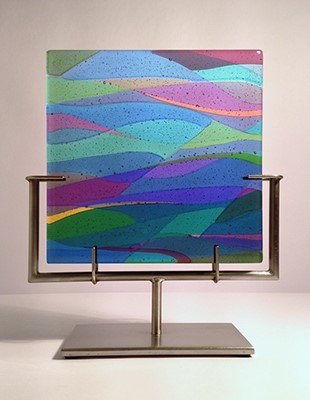
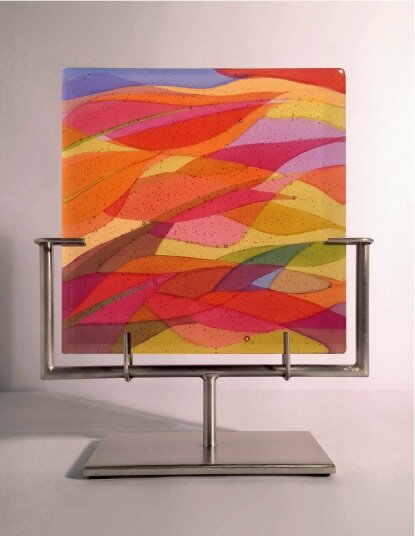
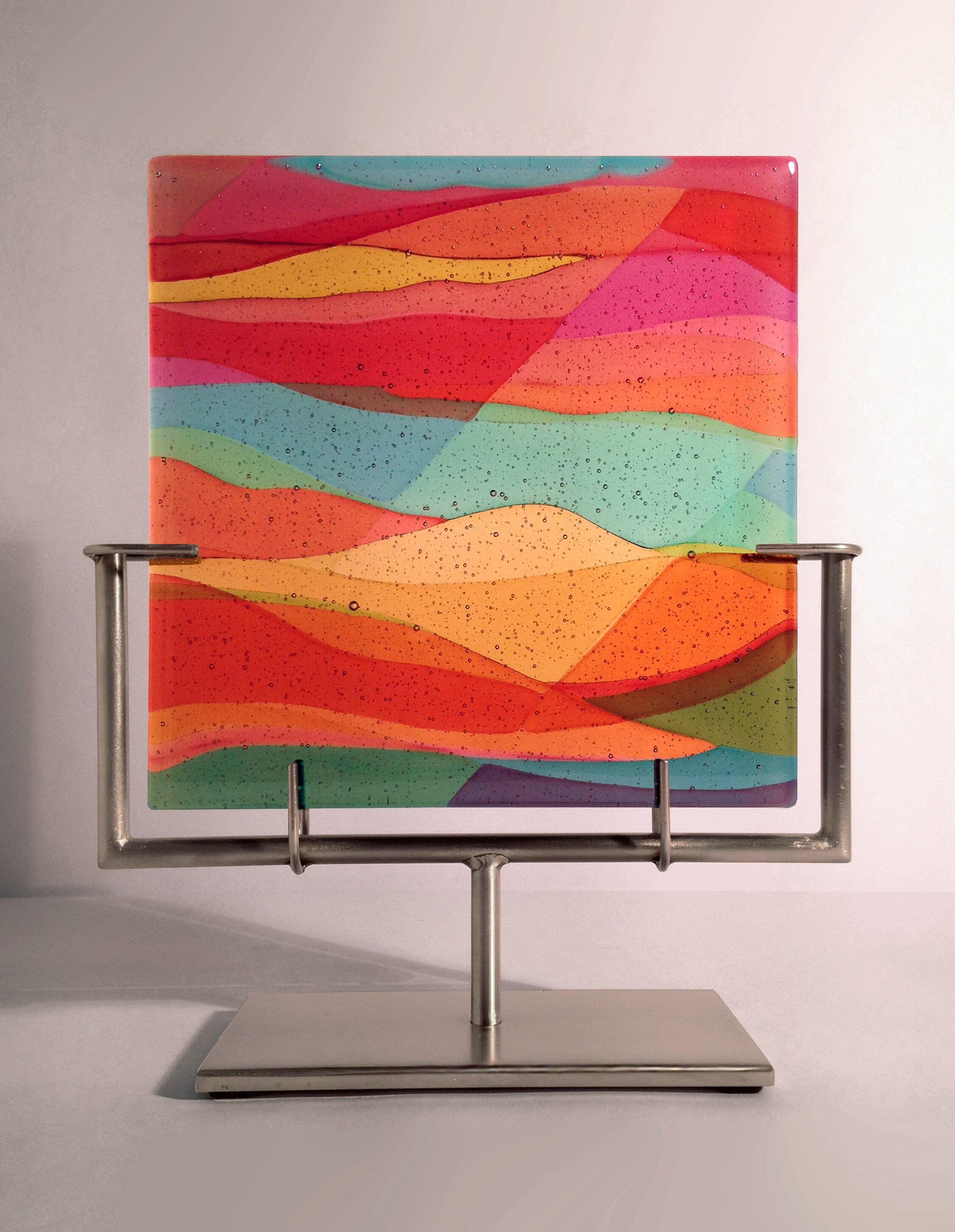
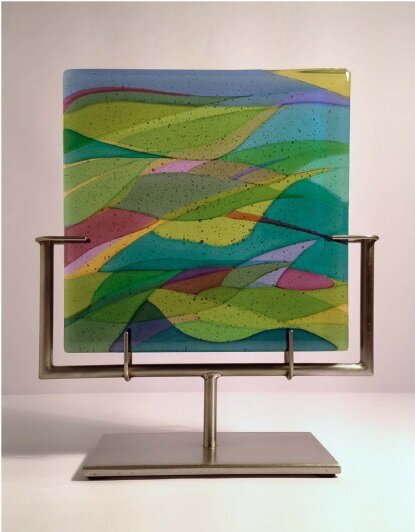

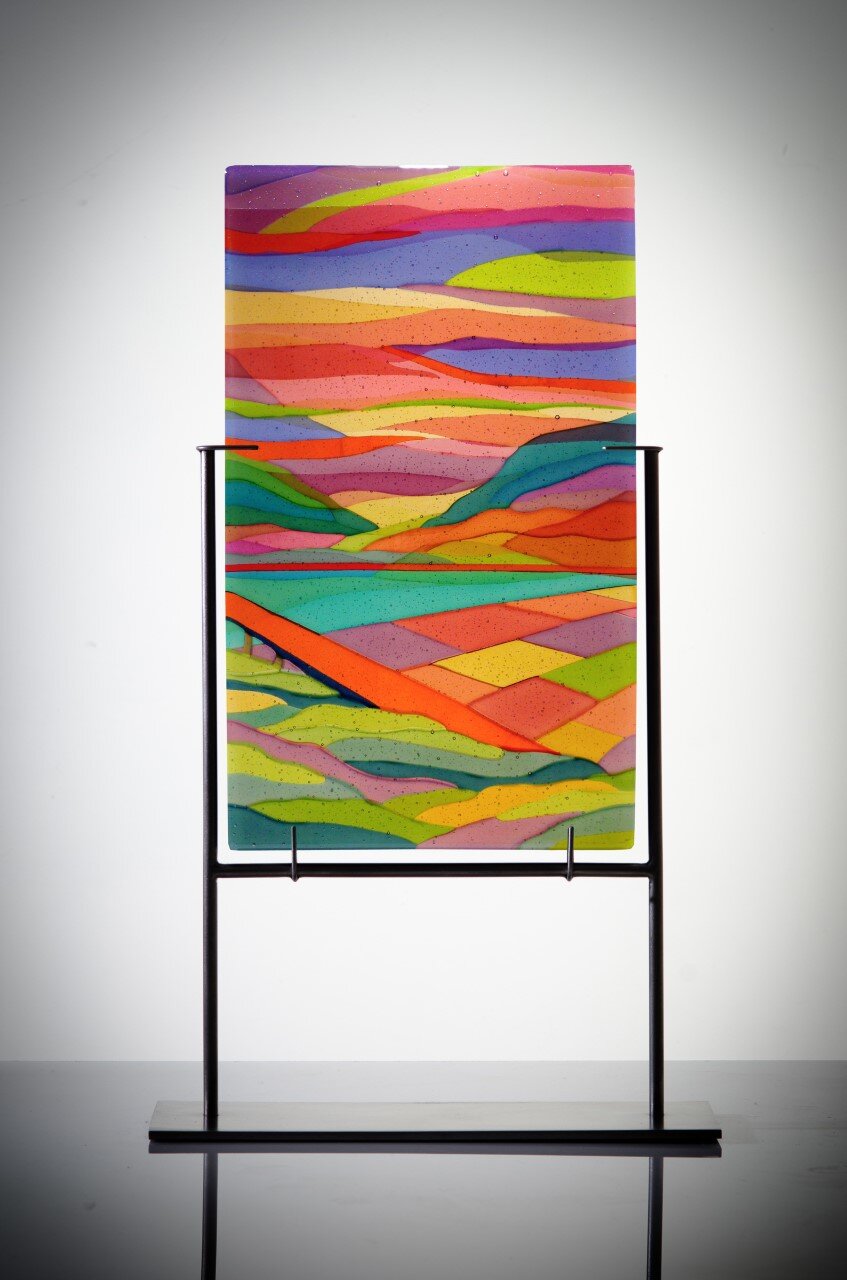
About the Artist
As Hafner’s flat glass mosaics evolved they began to acquire a unique beauty of their own, apart from the vessel onto which they were rolled.
In 1997, Hafner shifted her focus solely to the flat glass, as painter to canvas. Building layer upon layer of transparent cutouts, she began fusing them together to produce single multi-layered transparent panels, each rich with overlays of her diaphanous imagery.
Hafner’s glass works are in many major collections, including the Corning Museum of Glass, Corning, NY, the Cooper Hewitt Museum, NYC, the Brooklyn Museum, NY, the Musee des Arts Decoritifs, Montreal, the Museum voor Hedendaagse Kunst, Hertogenbosch, the Netherlands, the American Crafts Museum, NY, and the Norton Museum of Art in Palm Beach.



